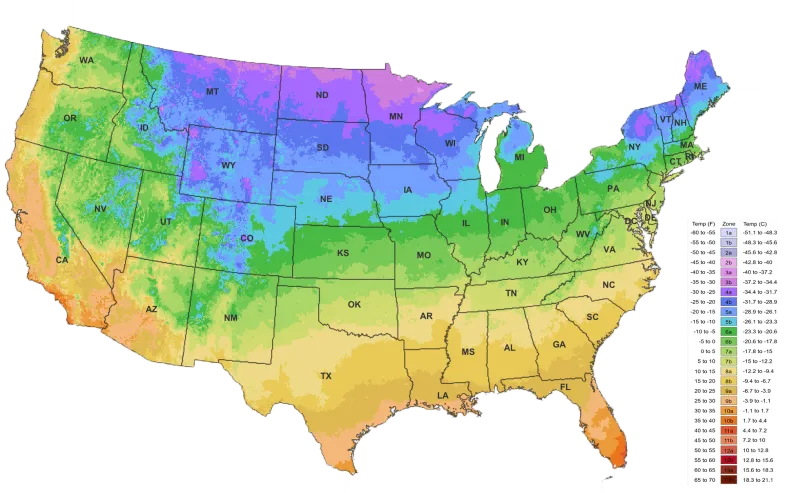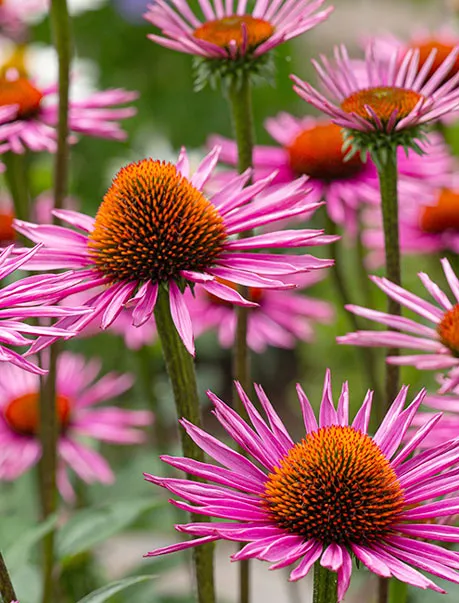Color:
- Purple
Attracts:
- Birds
- Butterflies
- Hummingbirds
Plant Type:
- Perennial
Common Name:
Purple Coneflower
Origin:
North America
Color:
- Purple
Attracts:
- Birds
- Butterflies
- Hummingbirds
Plant Type:
- Perennial
Common Name:
Purple Coneflower
Origin:
North America
Color:
- Purple
Attracts:
- Birds
- Butterflies
- Hummingbirds
Plant Type:
- Perennial
Echinacea purpurea
The USDA Plant Hardiness Zone Map is the standard by which gardeners and growers can determine which plants are most likely to thrive at a location. The map is based on the average annual minimum winter temperature, divided into 10-degree F zones.

5a (−20 °F to −15 °F)
5b (−15 °F to −10 °F)
6a (−10 °F to −5 °F)
6b (−5 °F to 0 °F)
7a (0 °F to 5 °F)
7b (5 °F to 10 °F)
8a (10 °F to 15 °F)
8b (15 °F to 20 °F)
The Purple Coneflower is native to eastern and central USA. It grows best in full sun to part sun locations and can be grown in moist to dry soil conditions. The summer flowering plants are great to attract bees, butterflies, and songbirds. In the landscape it has uses in butterfly, cutting, pollinator and native gardens. The mature plant grows to 3 to 4 feet tall by 1 to 2 foot wide. It is deer resistance and is easy to grow.
Fun Facts:
- The botanical name Echinacea is derived from the Greek word ekhinos which translates as hedgehog. This is due to the look of the spiny center part of the bloom. It was used by the Native Americans to help common ailments.

